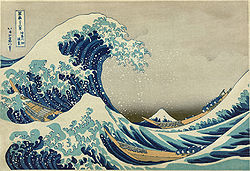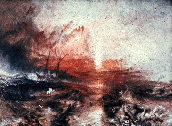During the 19th century, conflict between the ancient and modern art emerged. As a matter of fact, the century witnessed the beginning of radical changes in the field of art (Galenson ‘painting outside the Lines’ 45). It was also during this century that industrial revolution began in France whereby some artists embraced romanticism of art as the prime subject (Cork 428).
In line with this, change of impression on art equally faced myriad of conflicts since some artists inclined towards what was referred to as traditional realism. These traditional artists rebelled against the new wave of change in the wake of modern art. Needless to say, radical changes experienced in the work of art have challenged, altered and also expanded people’s perception on what constitutes art and an artist (www.all-art.org).
For this reason, modern work of art has never been pedestal to be cerebrated in the same wave as ordinary art (Galenson ‘painting outside the Lines’ 49). This paper aims at discussing the historical challenges, alterations and perceptions evoked among individuals in regard to art and artists. Moreover, it will also shed light on the several works of art that have been executed alongside their artistic agenda.
As part of the contemporary culture and societal norms, works of art have been speculated altered and widely exposed to the various channels of information such as media houses due to different attitudes evoked from the current era’s artists (Galenson ‘painting outside the Lines’ 65).
Although the present form of art bears its roots in the 19th century, there are several phenomena that have shaped it to its current state. Therefore, contemporary art has been subject to critique in society. Meanwhile challenges, alteration and perceptions of art since 19th century can be understood better by discussing several artists whose works have been executed in history (Cork 428).
It is imperative to note that this century marks the age of enlightenment where people’s altitude begun to change. The pursuit for art was no longer based on skill and knowledge but toward the taste and beauty (Cork 428). Vividly, artists in the century came up with theories against the rising tides on art. One of the major theories in the work of art was romanticism which developed in the 19th century (Galenson ‘painting outside the Lines’ 63).
Some of the renowned artists who spearheaded romanticism include Frederick Church and Thomas Cole (Cork 427). History has noted them as among the front runners in this field of art. This was quite unique in tin society in the sense that it was a form of art that elicited historical reactions and mixed feelings during that time.
The romanticists used aspects of color to illustrate mood and emotions that were depicted by nature. In addition to this, they aimed to react against industrial revolution where an aspect of color was overtaken by use of logical thoughts. In this case, emergence of science and technology took precedence on evoking emotion and mood (Siegel & Mattick 88).
Nevertheless, the artists opposed this and triumphed on man’s creations such as ancient ruins to depict nature. This theory aimed to detach art from the wing of rationalism since the proponents felt that the wave intended to make art a subject of demand for its usefulness. They insisted that art should be used for the sake of it implying that it should be autonomous. Later, this notion was highly criticized by philosophers such as Benjamin Walter and thus faded in the 20th century (Galenson ‘Anticipating Artistic Success’ 26).

After the execution of romanticism in the mid 19th century, impressionism emerged as a famous movement in artwork. Impressionists such as Mary Cassatt and Claude Monet emphasized more on the perception of color, light, vibrancy and movement in artwork. Their subject matter was on natural landscapes in which they made monochrome images through photographing sites.
They also embraced painting thick brushstrokes and distorted the artistic effect. However, this movement was replaced by post-impressionists. An example of a post-impressionist includes George Seurat who emphasized on use of unnatural colors on nature. Though the impressionists’ work was embraced by many people it was replaced by other movements that emerged such as modernism and realism.

It is evident that there was increased freedom in art work and this became essential for the progress of modernism movement in the field of art. Basically, art was altered from its meaning and purpose to content with public interests. Such alterations involved color, shape, style and composition.
Such alterations directly challenged the works of art by denying it s role on social, political and economic statements which artists hoped to make. In this case, works of art were made for the sake of pleasing the public. Increased demand on art gave artists freedom to break the rules of art. Basically, the theory of modernism saw art being used for individual own will. The implication here is that the anesthetic value of art was perceived at an individual point of view.
This posed a huge challenge for the work of art and the artists themselves. When art was used for vested benefits, the artists were denied their title and were thus perceived as tradesmen or craftsmen. There also emerged expressionist artists such as Ludwig Kirchner and Wassily Kandinsky who perceived art as a unique way of expressing emotions and personal vision.
It is apparent that innovations done on art have raised controversy since art has been esteemed in terms of beauty and not for its core purpose (Hunter, Jacobus & Wheeler 301). In line with this, artists have been affected since their work is considered on the basis of beauty and not quality. Evidently, due to such challenges, artists base their work on the market ruining their reputation (Cork 429). For instance, analysts no longer perceive modern artists as real artists but as crafty tradesmen.
Artists in the modernism movement intended to embrace realities and new material culture in the industrial epoch (Hunter, Jacobus & Wheeler 301). Inevitably, these artists simplified the forms and styles of art thereby retreating from traditional realism. Furthermore, more emphasize was made on the visual appearance rather than quality of artwork produced. Conceptually, the perception of people has been disfigured completely.
Evidently, contemporary societies value the appearance of artworks instead of the quality (Hunter, Jacobus & Wheeler 301). However, there is a huge controversy over whether the quality of art is equivalent to the cost incurred in the market. Some critiques argue that as the price of art products continue to rise, the quality should be improved accordingly (Siegel & Mattick 88).
However, others argue that the beauty should be considered in relation with prices. Surprisingly, most of the presented work of art has been considered to be very expensive yet the quality is very squat (Siegel & Mattick 88). The aspect of beauty has diminished the morale of artists who produce work of art not to attract attention but to evoke certain intuition and emotion on people’s minds.
To sum it up, it is imperative to reiterate that what used to be regarded and fully embraced as artistic work of art and valued for its strength and real illusion has been diluted as the society is largely turning to elements of taste and beauty. It is also against this backdrop that different approaches on art such as realism and modernism have profoundly influenced people’s perception.
To synthesize on this, certain people perceive art as a product of skills and knowledge and that it should be done for its own sake. Needless to say, other people perceive art as an occupation that can be utilized to produced object which suits both taste and preferences of individual members of society. That notwithstanding, works of art have been critically challenged due to the fact that the products derived from this filed tend to deny artists their esteemed titles.
The argument that has been put forward is that due to adherence to vested interests in art, artists have been sidelined and merely treated as craftsmen or tradesmen. Nonetheless, such criticisms do not entirely overrule the fact that artists are still valued in society for positive contribution they have injected since time immemorial. It is without doubt that modernism has played a relatively negative role in the whole issue.
Works Cited
A world History of Art. Art through Ages. 2011. Web.
Cork, Richard. Breaking down the Barriers: Art in the 1990s, New Haven: Yale University Press, 2003. Print.
Galenson, David. “Anticipating Artistic Success: Lessons from History,” World Economics, 6. 2 (2005), 11-26.
Galenson, David. Painting outside the Lines, Old Masters and Young Geniuses: The Two Life Cycles of Artistic Creativity .Princeton: Princeton University Press, 2006. Print.
Hunter Sam, Jacobus, John & Wheeler Daniel. Modern Art. New Jersey: Prentice Hall, 2004. Print.
Siegel, Katy & Mattick, Paul. Art Works: Money. New York: Thames & Hudson, 2004. Print.